| |
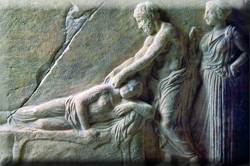 To understand the chiromassage, it is
worthwhile to make a small journey, for the history of the massage
in the different cultures and countries.
China
To
the emperor Huang Ti, whose existence
according to some goes back at 2.500 years before Christ and
according to others at 1.000, is attributed the work Nei Ching,
in which
 one speaks, of the cure, by means of frictions and
kneadings on the skin and the muscles, keeping in mind the breathing
rhythm. One of their paragraphs, begins saying: "first should feel
with the hand and to trace the system of the body. The impulses of
the hands should be continued equally"... one speaks, of the cure, by means of frictions and
kneadings on the skin and the muscles, keeping in mind the breathing
rhythm. One of their paragraphs, begins saying: "first should feel
with the hand and to trace the system of the body. The impulses of
the hands should be continued equally"...
During the dynasty Tang, (609 - 907 d. C.), four
types of therapists were recognized: doctors, acupuncturists,
masseurs and exorcists.
Egypt
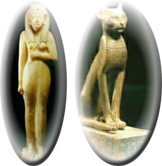 Also
in the history of the remote Egypt, we find different references to
the imposition of hands and the massage, generally combined with the
manipulation in the plexuses or chakral Also
in the history of the remote Egypt, we find different references to
the imposition of hands and the massage, generally combined with the
manipulation in the plexuses or chakral
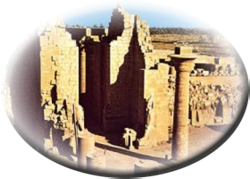 areas, as well as in
muscular areas with therapeutic ends. areas, as well as in
muscular areas with therapeutic ends.
This art the same as the divinatory sciences, the training of
animals or the enchantment of snakes and the therapies of the dream,
they were in the priests' hands that ended up being true expert in
physiotherapy.
In some types of sedative massages, it was also used the help of
the colors, being the first steps of the current chromotherapy.
India
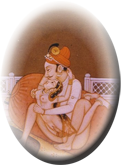 According
to McAuliffe, in the old Indian, the practice of the massages, it
was known as Samvahana. According
to McAuliffe, in the old Indian, the practice of the massages, it
was known as Samvahana.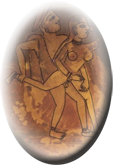
Already in old Indian medicine treaties, as the Ayur-veda,
are references to the massage with therapeutic ends,
using for it terms like touchings, rub, friction.
The Chamboning, is an old massage
technique, in which the frictions were made with the help of the
juice of certain lemons, for the beneficent and aromatic effect of
the same ones that they also contributed softness to the skin, the
deformation of the word chamboning, in fact, gives as a
result the word shampoo.
Greece

In the old Greece, the sciences and
the Arts flourished, the same as the cult to the beauty of the body,
this cult took to the sport competitions, where the aliptes,
was in charge of of anointing with
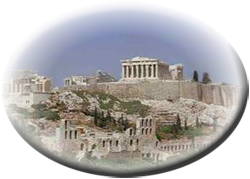 oils the bodies of the athletes
and they were also expert masseurs, specialized in sprains, twists
and dislocations. oils the bodies of the athletes
and they were also expert masseurs, specialized in sprains, twists
and dislocations.
Homer, in their work The Odyssey,
describes beautiful and strong woman hands anointing and rubbing the
bodies of the soldiers, to relax them and to loosen them.
Also in Greece, they were the pioneers of the hydrotherapy
that together with the massage, era used in the gyms where the
athletes got ready for the Olympic Games. To the cold
bathroom using the estringil, to liberate the skin of
the spare oils, they happened him the massages relaxants.
Hippocrates (450 to. C.), considered as
father of the medicine, in their "Treaty of the Articulations and
the Fractures",
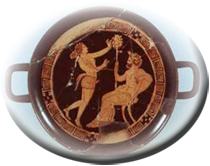 dictated
a series of norms with relationship to the manual therapies that in
turn had received of their ancestors, what evidences the antiquity
of the massage. In this treaty, shows the necessity to massage the
inferior extremities in address to the heart, what was indicated to
activate the circulation of venous return. We must keep in mind that
the blood stream, was not discovered later up to two thousand to you
in occident. to dictated
a series of norms with relationship to the manual therapies that in
turn had received of their ancestors, what evidences the antiquity
of the massage. In this treaty, shows the necessity to massage the
inferior extremities in address to the heart, what was indicated to
activate the circulation of venous return. We must keep in mind that
the blood stream, was not discovered later up to two thousand to you
in occident. to
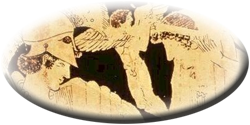 define this system of upward massage, Hippocrates
used the term anatripsis. define this system of upward massage, Hippocrates
used the term anatripsis.
Claudio Galeno (131-210 d. C.), it
composed their "Treaty of Hygiene", where it admitted as
important three organic centers: the heart, the liver and the brain.
In this treaty, he said that the illness consisted on an imbalance
of the vital economy of the organism, her maxim sentences it is:
"the nature, anything makes in vain". Galeno, was
commissioned to regulate the activities of the aliptes,
with relationship to the athletes and Gladiators. In the times of
Galeno, the massage enjoyed great prestige from the therapeutic
point of view.
Roma
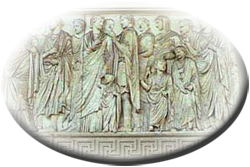
Among the many
inheritances that the Roman empire acquired of the Hellenic culture,
is the massage.
In the imperial and classic Roma, they were completely tied
to each other the cures, the thermal waters, the spas, the
restorations and the massages.
The massages, were practiced to eliminate organic deficiencies,
as well as to be in shape and to correct
postural defects, being also practiced the massages sedatives
or relaxants, all them together to plentiful foods and bathrooms
relaxants, to the object of satisfying the palate and the greed.
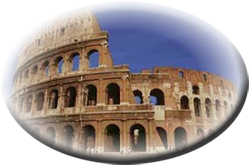
The medical Asclepiades of Bithynia, sustained that
in the nature, everything happens from necessity and that the nature
goes to his, sometimes being able to benefit and other to harm.
Asclepiades, combined the massage, the diet, the bathrooms, the
drinks and the drugs of soft component, to produce a therapeutic
pleasure and a soothing escape. One dedicates to try patient with
psychic dysfunctions, ailment to which he called nefritis
and in whose treatment, united the massage.
Termison and Areteo, pupils of the
previous one, contributed from an effective way to the diffusion of
the massage, through popularizing their therapeutic virtues.
Some specialists existed in the Roman empire in sport medicine
and recovery, called vulnerari that were sport
masseurs and other calls ungüentari that were
specialist in ointments.
The massage along the Middle Ages
The hypocritical and moralists tendencies of those time, were
generating a completely made scarce atmosphere that generated the
feeble thing, mixture of superstition, lack of culture and
prejudices.
Ended up considering the body like payee of the ferment of the
sin, (fomes peccati), passing in compensation to give
a place tremendously exaggerated to the spirit and their
ethical-moral securities.
In this atmosphere, it is really worthy of praise the work of
those that without false chastities, they continued developing the
techniques of the massage, without the hypocritical fear to the
naked bodies, in order to rubbing, to massage them and to manipulate
them.
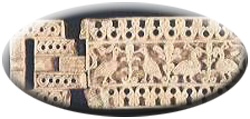
Celio Aureliano, medical doctor of the 5th century,
united the massage to the diets, to the bathrooms of sun and the
breathing exercises in the therapies that carried out mainly in the
North Africa. In this therapies it distinguished two forms of
working:
-
Analepsis or restoring
treatment, being based on unction's and sedative manipulations,
guided to restore the balance and the patient's forces.
-
Metasíncrisis,
treatment
starting from stronger manipulations and recovery movements,
exercises and unblocking.
Ecio de Amida,
in the century VI, ended up considering the massage,
like a form of life, recommending to use it, next to the unctions
three up-to-date times.
Avicena, medical doctor and Arab
philosopher of the XI century that to past to the posterity, with
the nickname of prince of the medicine, he wrote The Canon of
the Medicine and the Book of the Cures, where
the virtues of the massage were explained, stops after lingering
exercises or to eliminate the unhealthy substances accumulated in
the muscles, through the friction that will also eliminate the
fatigue. He recommends the soft frictions and applying oil, since in
the event of rubbing hard and hardly, the treated members can feel
the effect.
The massage from the Renaissance until our days
About the XIX century, the interest for the functional
chiro-recovery, demonstrated by some doctors of which can describe
as scientific medicine, opened the field for the specialists of the
anatomy and the physiology.
The carve up and study of the organs of dozens of cadavers and
the experiments with animals, they gave place to the discovery of
the operation of the sanguine system and of the lymphatic currents,
as well as that of the behavior of the nervous system, making evolve
the massage, until that that in our days, it is known as
chiromassage.
|
|